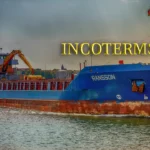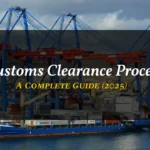Exporting is one of the most rewarding business models in India. Whether it’s rice, spices, textiles, or engineering goods, Indian products are in high demand globally. The government is also actively supporting exporters through various schemes.
If you’re planning to start an export business in India in 2025, this blog post is your step-by-step guide—from documents to product selection, finding buyers to logistics.
Why Start an Export Business in India in 2025?
2025 is a golden year to start an Export Business in India due to:
India’s growing international trade network
Simplified documentation & digital portals
Strong demand for Indian goods (like rice, organic products, pharma, and more)
Government incentives (like RoDTEP, interest subvention)
Whether you’re a new entrepreneur, MSME owner, or manufacturer, exports can multiply your income and scale your brand globally.
Step-by-Step Process to Start an Export Business in India in 2025
Step 1: Decide What to Export
Choose a product that has:
High international demand
Competitive pricing
Local availability
Low perishability (unless you can manage cold chain)
🔥High-demand export products in 2025:
Basmati Rice & Non-Basmati Rice
Spices (turmeric, cumin, cardamom)
Handicrafts and home décor
Organic food products
Pharma & Ayurveda
Engineering goods
Textiles & garments
Use DGFT’s export data, IndianTradePortal.in, and Trademap.org to analyze demand.
Step 2: Register Your Business
Start by registering a legal entity:
Proprietorship (simplest)
Partnership / LLP
Private Limited Company (preferred for scaling)
Apply for:
PAN card (if you don’t have one)
GST registration (required for export invoices)
Step 3: Get Importer Exporter Code (IEC)
IEC is mandatory to Start an Export Business in India. It is issued by DGFT (Director General of Foreign Trade).
Apply Online:
Visit https://www.dgft.gov.in
Fill the IEC application form
Upload PAN, Address proof, bank details
Pay ₹500 fees
IEC is issued in 1–2 working days.
Step 4: Choose Your Export Product HS Code before Start an Export Business in India
Each product has a unique HS Code (Harmonized System Code) used globally to identify goods.
Find HS code using:
ICEGATE
DGFT Website
IndianTradePortal.in
This code is used in:
Shipping Bills
Export Invoices
Customs Clearance
Step 5: Open a Current Account & AD Code Registration
Before start an Export Business in India, You need a current account in a bank that handles foreign currency remittances.
Ask your bank to register your AD (Authorized Dealer) code with Indian customs at the port of export. Without AD Code registration, you can’t generate shipping bills.
Step 6: Register with Export Promotion Councils to Start an Export Business in India
Register with the relevant council to avail:
Certificate of Origin
Export incentives (RoDTEP, MEIS*)
Market development schemes
Example Councils:
| Product | Council |
|---|---|
| Agriculture | APEDA |
| Textiles | TEXPROCIL |
| Handicrafts | EPCH |
| Engineering | EEPC |
| Pharma | Pharmexcil |
Step 7: Finalize Logistics & Packaging
Decide on:
Sea or Air shipment?
FCL (Full Container Load) or LCL (Less than Container Load)?
Incoterms (FOB, CIF, DDP)
Work with a reliable freight forwarder to handle:
Customs clearance
Documentation
Freight booking
Packaging Tips:
Follow international standards
Use eco-friendly, water-proof materials
Label correctly (exporter’s name, consignee, net/gross weight)
Step 8: Export Documents Required
Prepare the following mandatory documents:
| Document | Purpose |
|---|---|
| Commercial Invoice | Price & quantity confirmation |
| Packing List | Describes contents of each package |
| Shipping Bill | Required by Indian Customs |
| Bill of Lading / Airway Bill | Issued by carrier |
| Certificate of Origin | Proves country of origin |
| Insurance Certificate | Shipment insurance proof |
| FSSAI / Phytosanitary Certificate | For food/agro exports |
Step 9: Find International Buyers
The most important step! You can find buyers by:
Online Platforms:
IndiaMART, Alibaba, TradeIndia
ExportersIndia, GlobalTrade.net
DGFT’s Trade Help Desk
Tenders from UN, World Bank (for services & products)
Participate in:
Trade Fairs (e.g., Gulfood, SIAL, Canton Fair)
B2B Buyer-Seller Meets
Virtual buyer meetings via EPCs
Email Marketing:
Prepare a clean and professional export catalog or product brochure and send cold emails to international buyers.
Step 10: Receive Payment Safely
Use safe international payment methods like:
| Method | Safety |
|---|---|
| Advance Payment | ✅ Very Safe |
| Letter of Credit (LC) | ✅ Secure |
| Documents Against Payment (D/P) | ☑️ Moderate |
| Open Account | ❌ Risky for new exporters |
Ensure:
All payments go through your bank account
You get BRC (Bank Realisation Certificate) for incentives
Government Support for Exporters in 2025
Take advantage of these schemes:
1. RoDTEP – Refund of duties & taxes
2. Interest Equalization Scheme – Cheaper credit
3. TIES – For export infrastructure development
4. MAI – Market Access Initiative (subsidy on expo participation)
Visit DGFT & your EPC’s site to apply.
Common Mistakes New Exporters Must Avoid
Not understanding Incoterms and shipping rules
Relying only on one buyer
Ignoring quality and packaging standards
Poor documentation leading to payment delays
Not getting an export order in writing
Sample Export Business Setup Cost (India)
| Item | Approx. Cost (INR) |
|---|---|
| Company registration | ₹4,000–₹15,000 |
| IEC Code | ₹500 |
| Website & Branding | ₹5,000–₹10,000 |
| Product Samples | ₹2,000–₹5,000 |
| Freight Agent Deposit | ₹10,000–₹25,000 (if required) |
| Misc. & Marketing | ₹5,000+ |
You can start an export business with as low as ₹25,000–₹50,000.
Best Products to Export in Small Scale (2025)
White and black sesame seeds
1121 steam or golden sella basmati rice
Organic jaggery and spices
Indian handicrafts and decor items
Imitation jewelry
Herbal teas & Ayurveda products
Top Export Markets in 2025
| Region | Products |
|---|
| Middle East | Rice, spices, garments |
| USA | Pharma, FMCG, textiles |
| Europe | Organic food, ayurveda, leather |
| Africa | FMCG, rice, construction goods |
| Southeast Asia | Plastics, electronics, agri inputs |
Final Checklist Before First Export Order
Product selected & samples prepared
IEC obtained
Bank account & AD code registered
Buyer confirmed (in writing)
Logistics partner finalized
Payment terms clear (preferably advance or LC)
All documents prepared
Summary: Export Business is a Gateway to Global Growth
If you’re looking to build a brand globally, generate foreign exchange income, and scale beyond India—2025 is the perfect year to begin exporting.
Start small, stay compliant, focus on quality and timely delivery—and success will follow.
FAQs on Starting an Export Business in India
Q. Can I start an export business from home?
Yes. You can register as a sole proprietorship and manage everything online.
Q. How long does it take to start exporting?
If your documents are ready and you have a buyer, you can start within 10–15 days.
Q. Is GST required for exporters?
Yes, but exports are zero-rated under GST. You can claim a refund on input tax.
Q. Do I need a license to export?
Apart from IEC and product-specific approvals (like FSSAI for food), no license is required for most products.
Q. Where can I learn more about export documentation?
Attend DGFT workshops, EPC training, or consult with a CHA (Customs House Agent) or freight forwarder.
Related posts:
 Essential Export Documents Required in 2025 – Complete Guide for Exporters
Essential Export Documents Required in 2025 – Complete Guide for Exporters
 Incoterms Explained: The Ultimate Guide for Global Trade
Incoterms Explained: The Ultimate Guide for Global Trade
 Customs Clearance Process for Export Business: A Complete Guide (2025)
Customs Clearance Process for Export Business: A Complete Guide (2025)
 EX Works (EXW) Incoterms Explained: Exporter’s Complete Guide
EX Works (EXW) Incoterms Explained: Exporter’s Complete Guide
 Top 25 High margin export products from India
Top 25 High margin export products from India
 Demurrage, Detention, and Free Time in Shipping: Complete Guide for Exporters and Importers
Demurrage, Detention, and Free Time in Shipping: Complete Guide for Exporters and Importers


Pingback: Essential Export Documents Required in 2025 – smart export
Pingback: EGM in Export: Ultimate Guide to Compliance for 2025